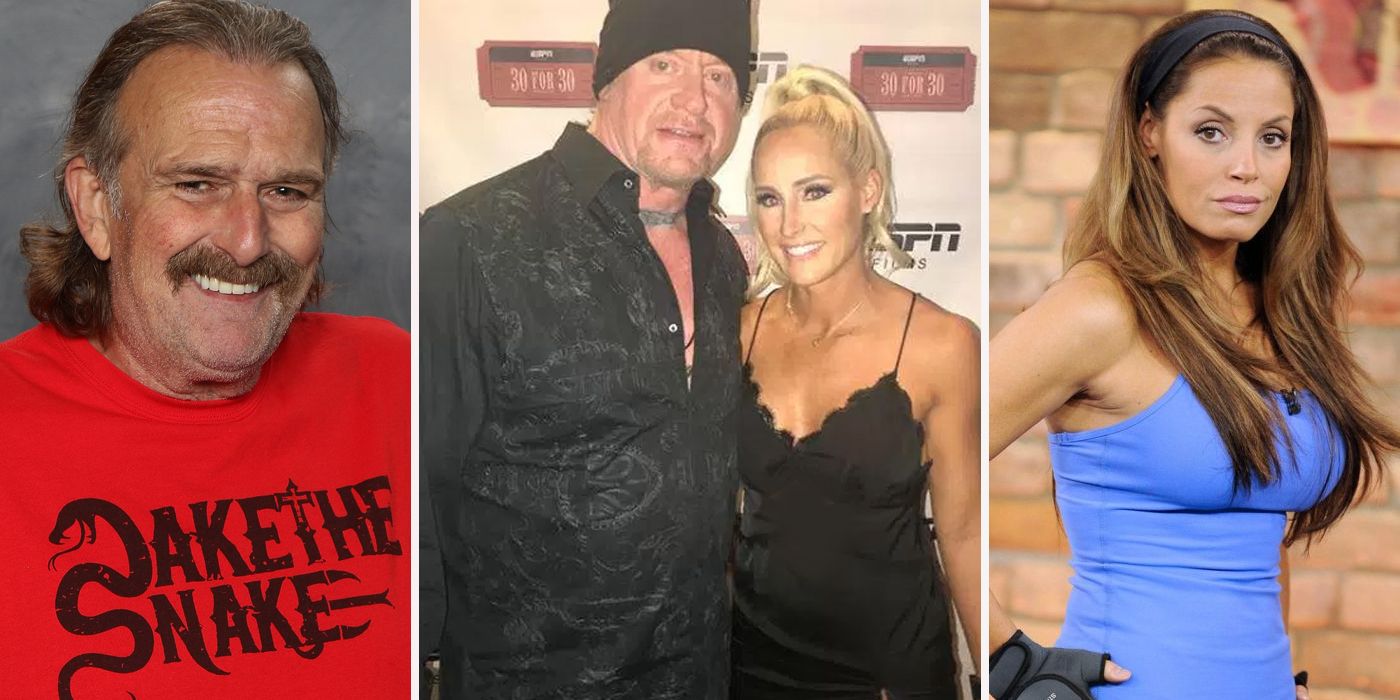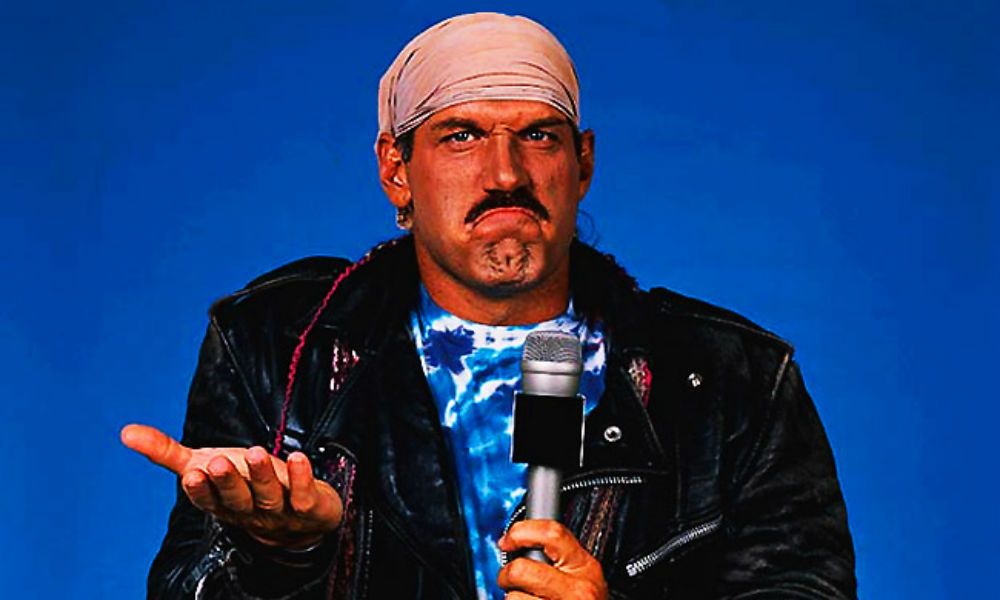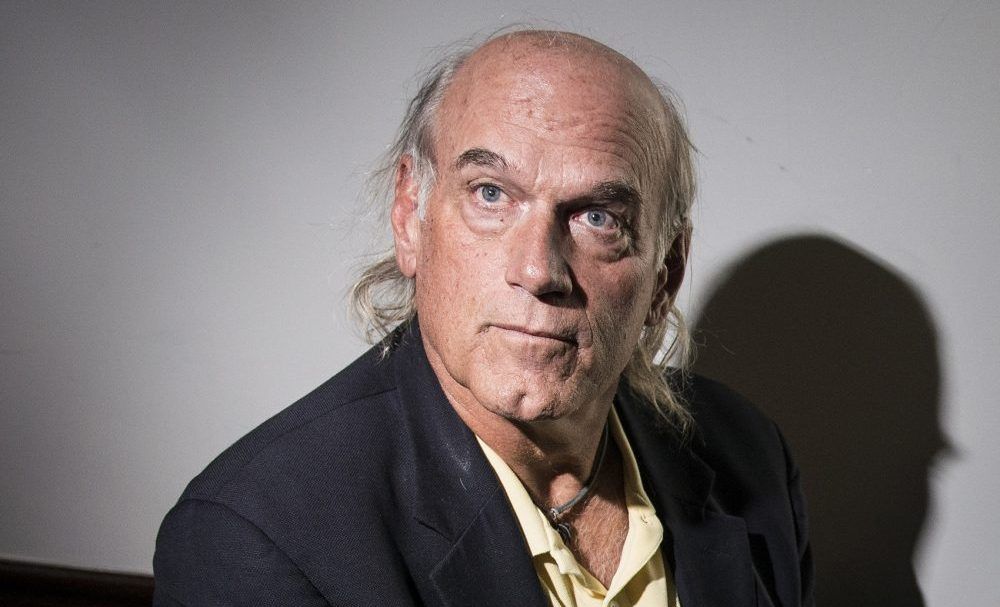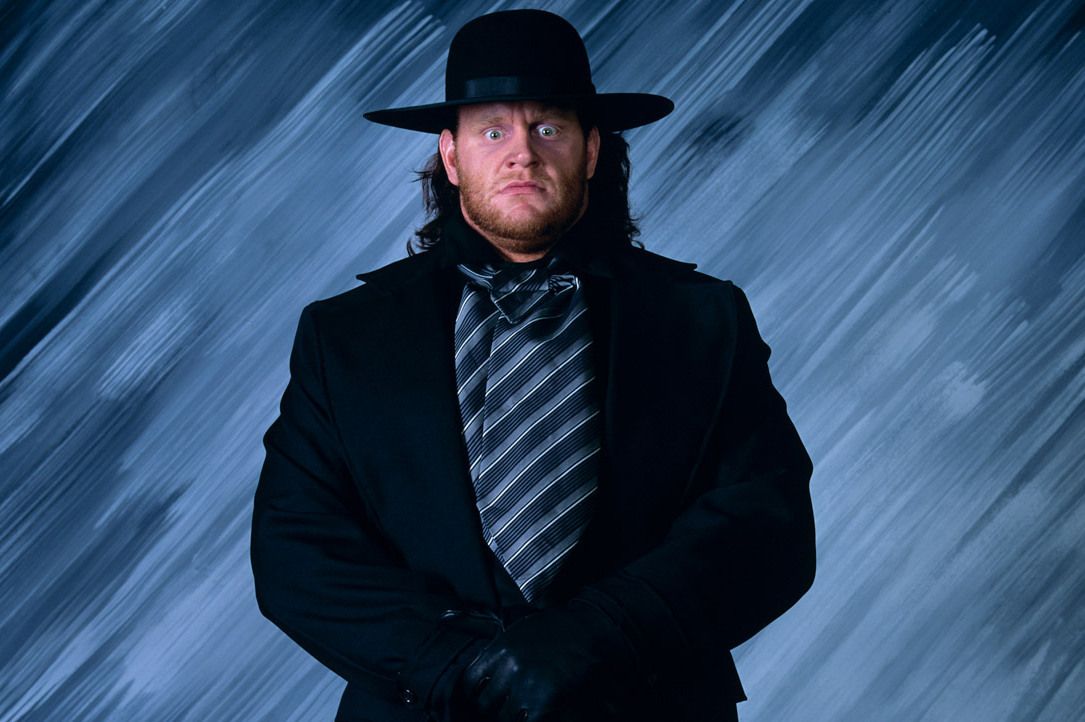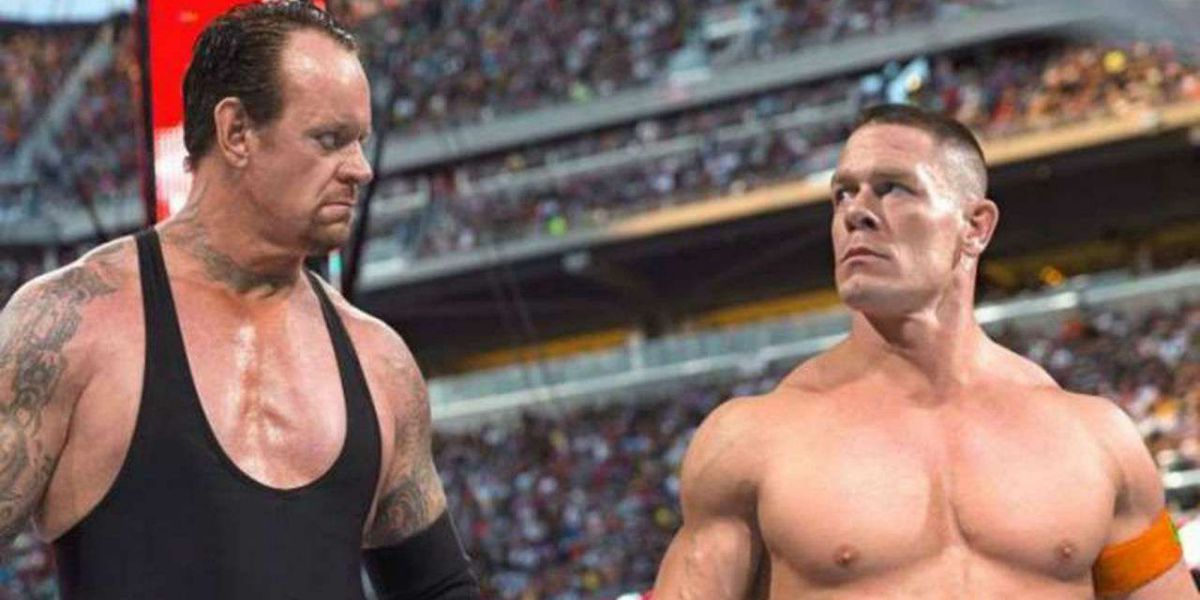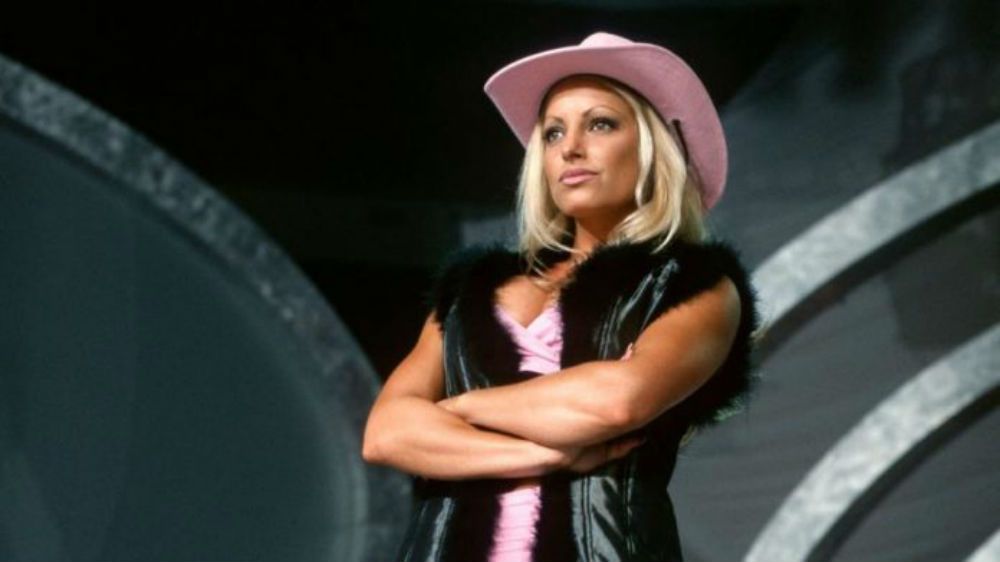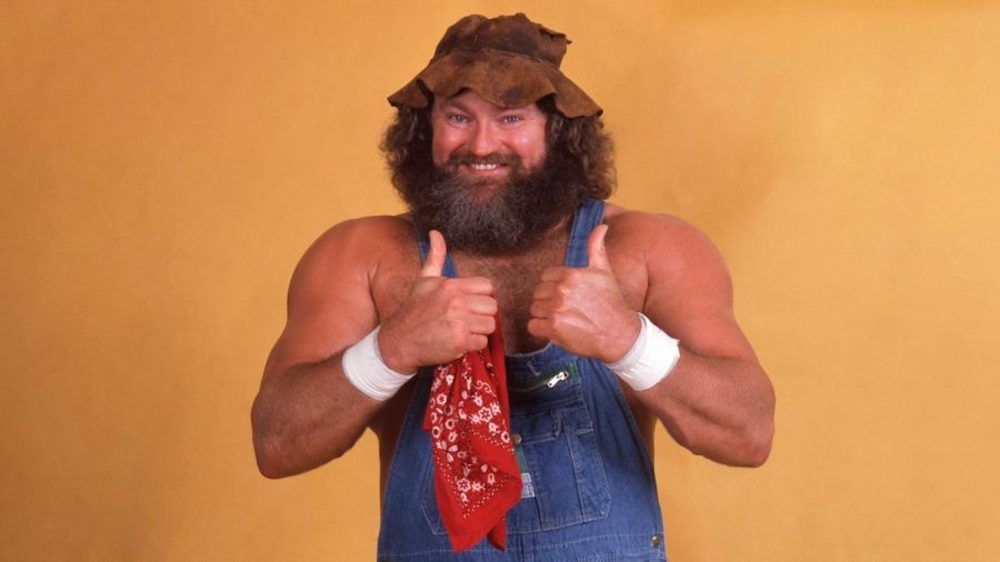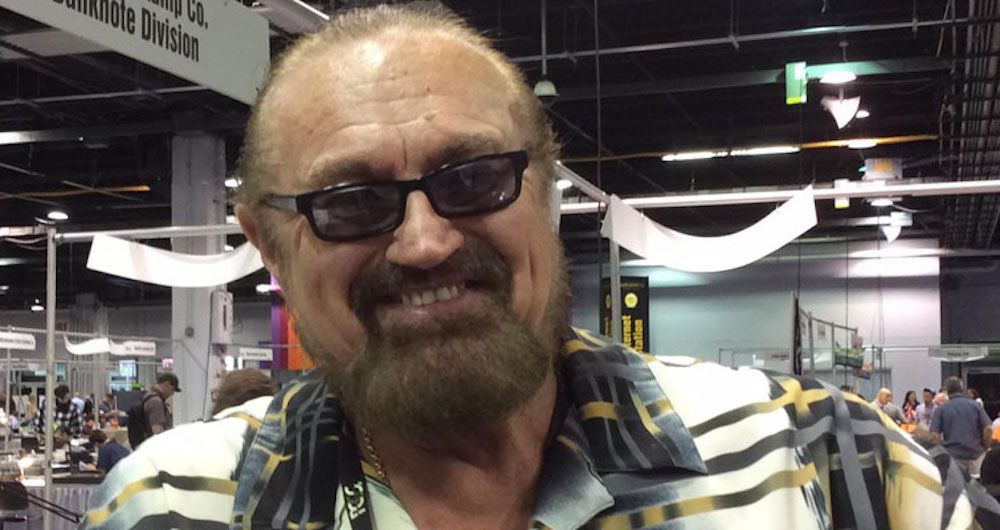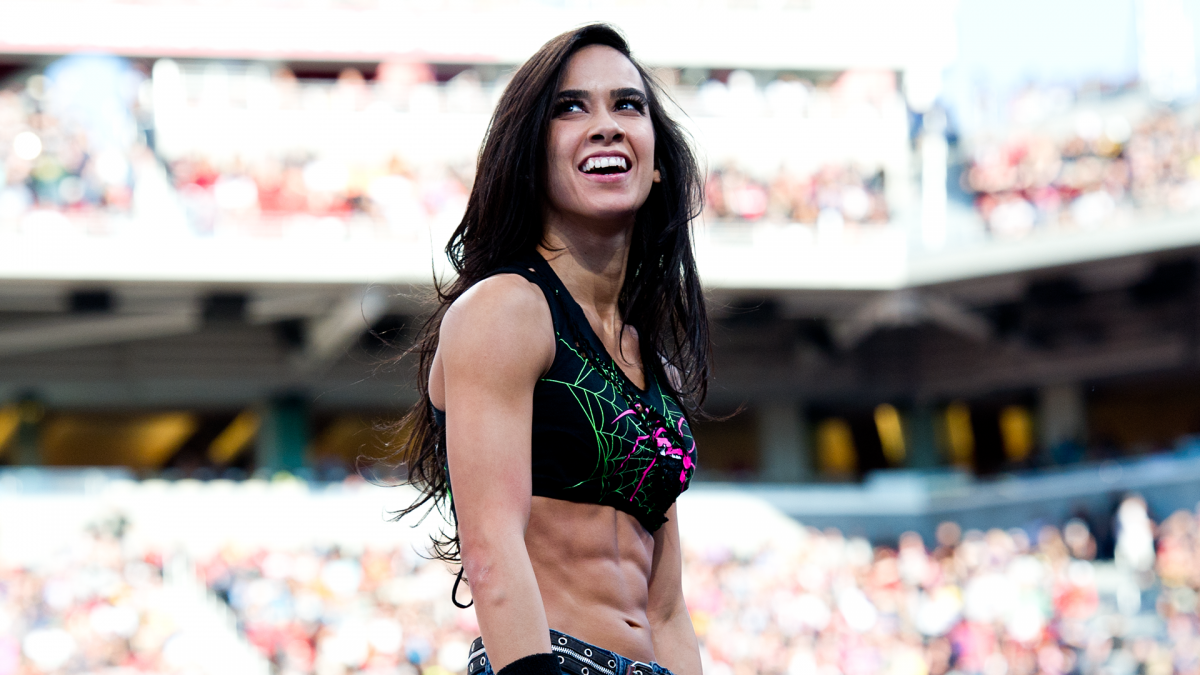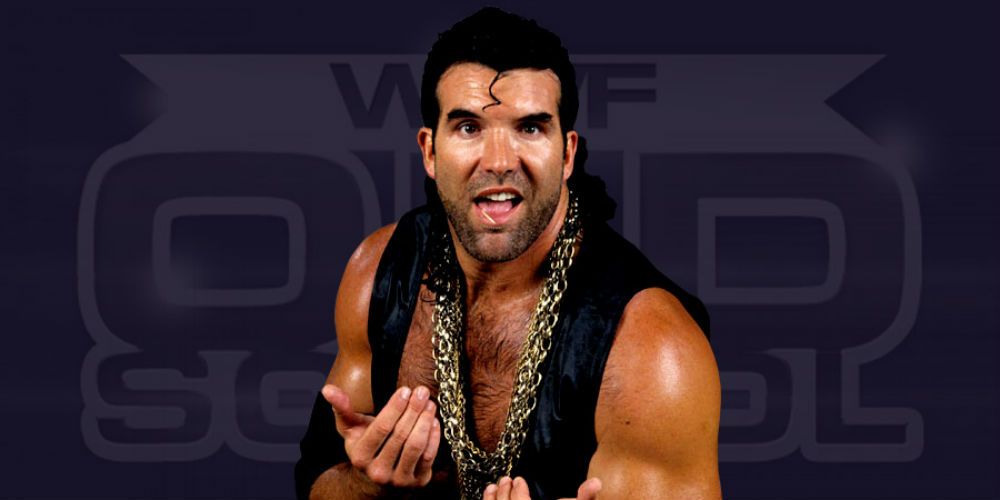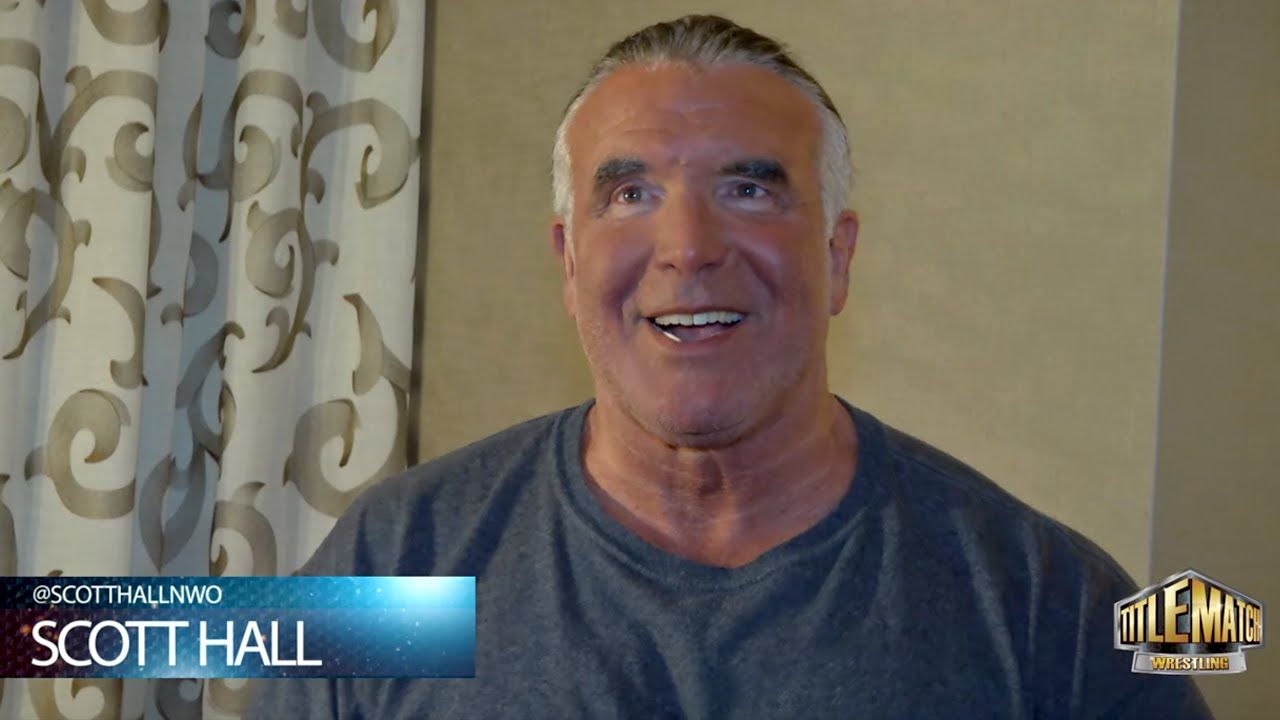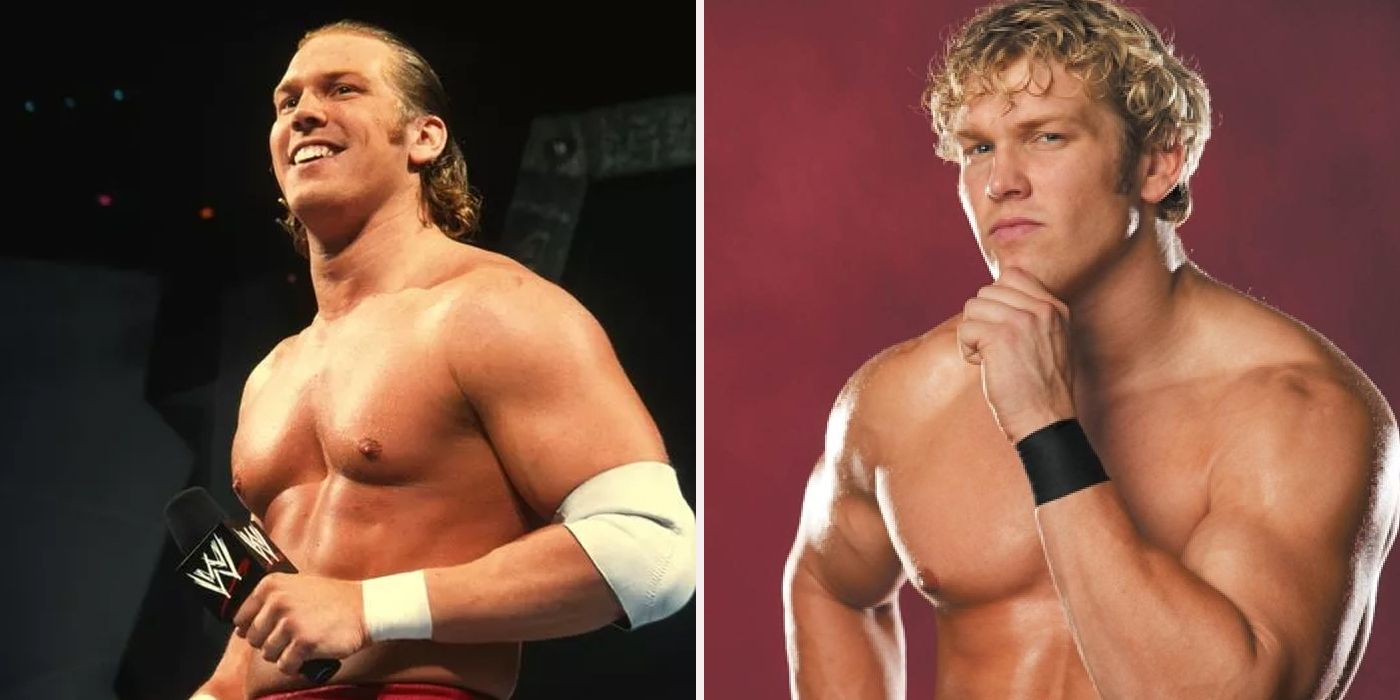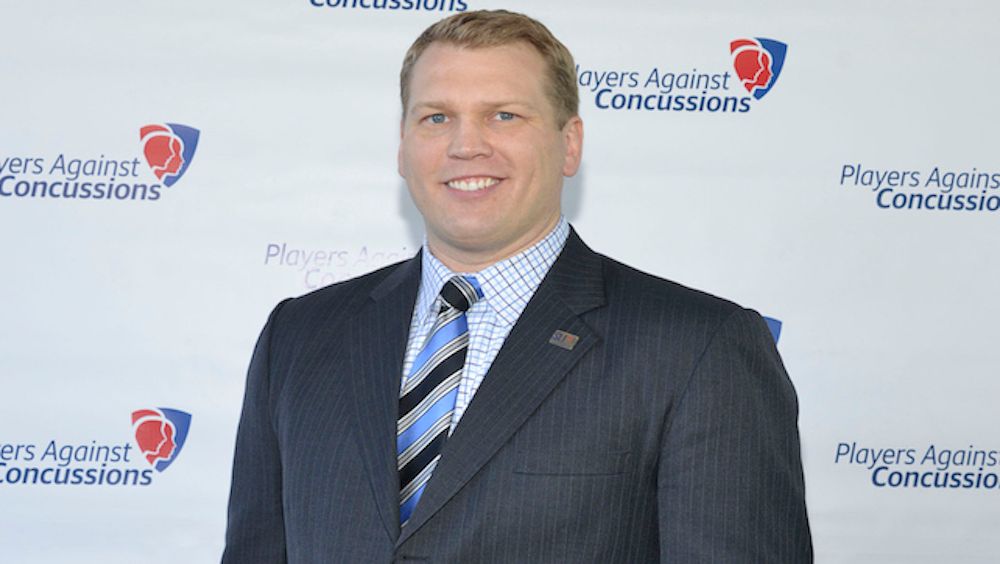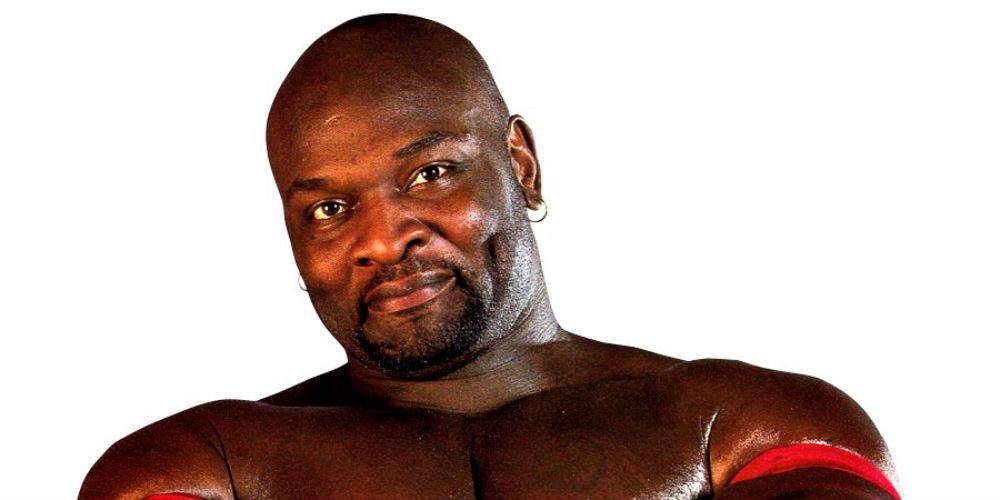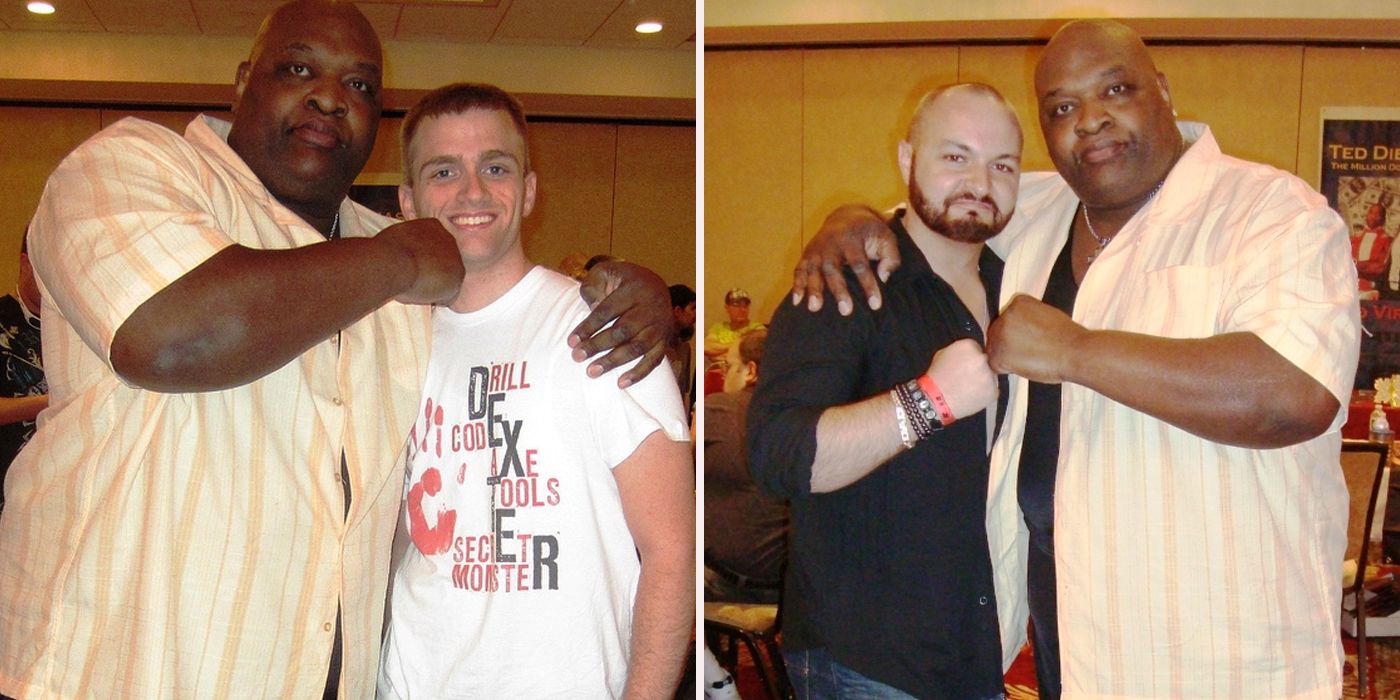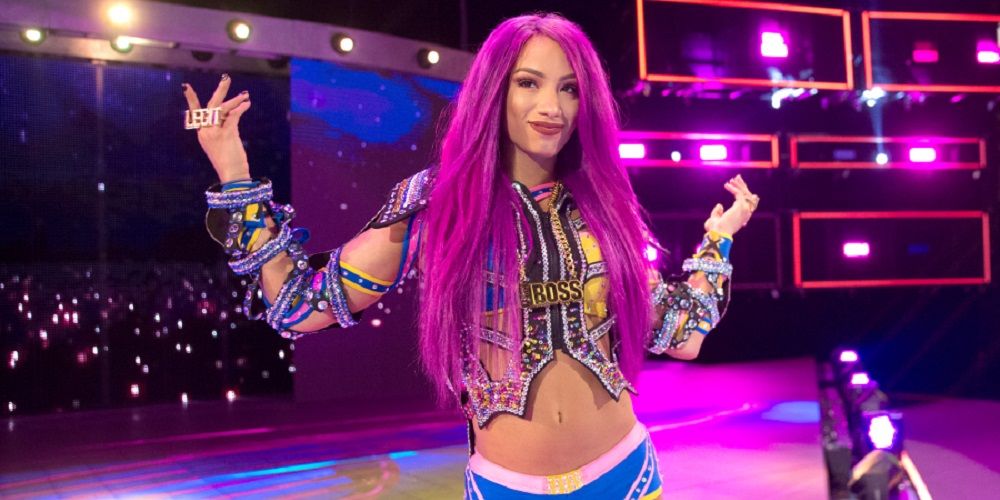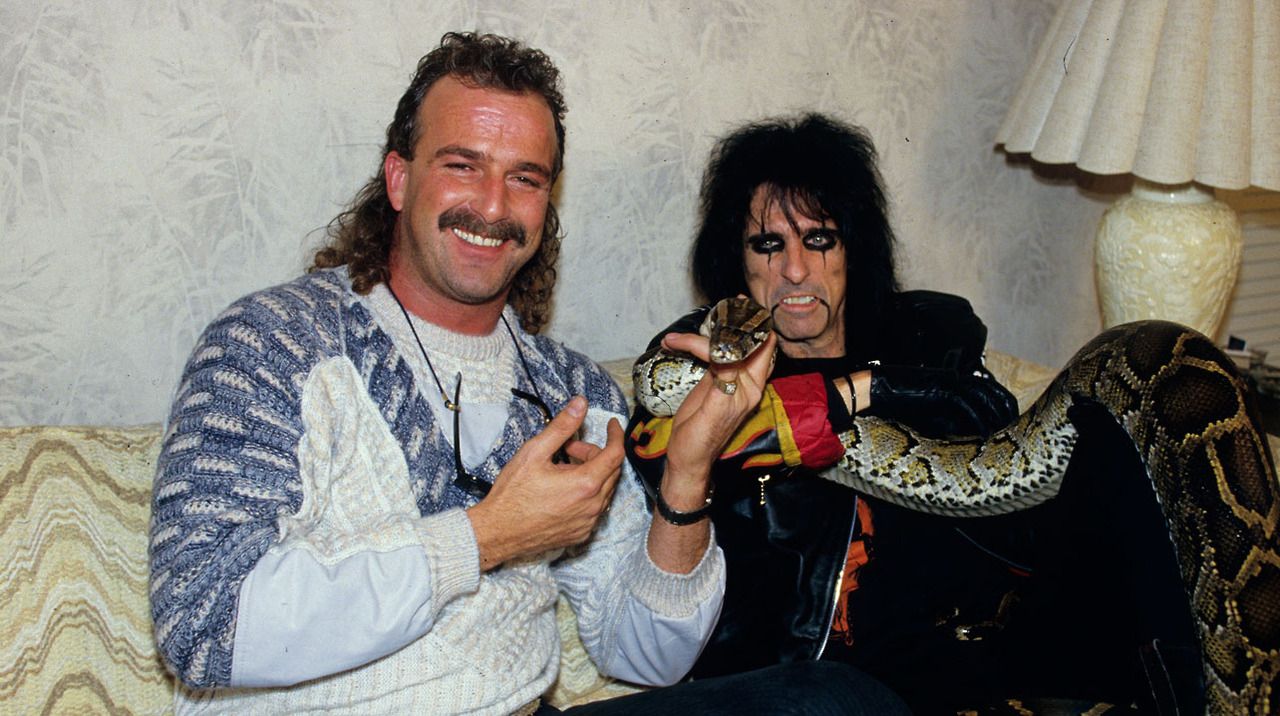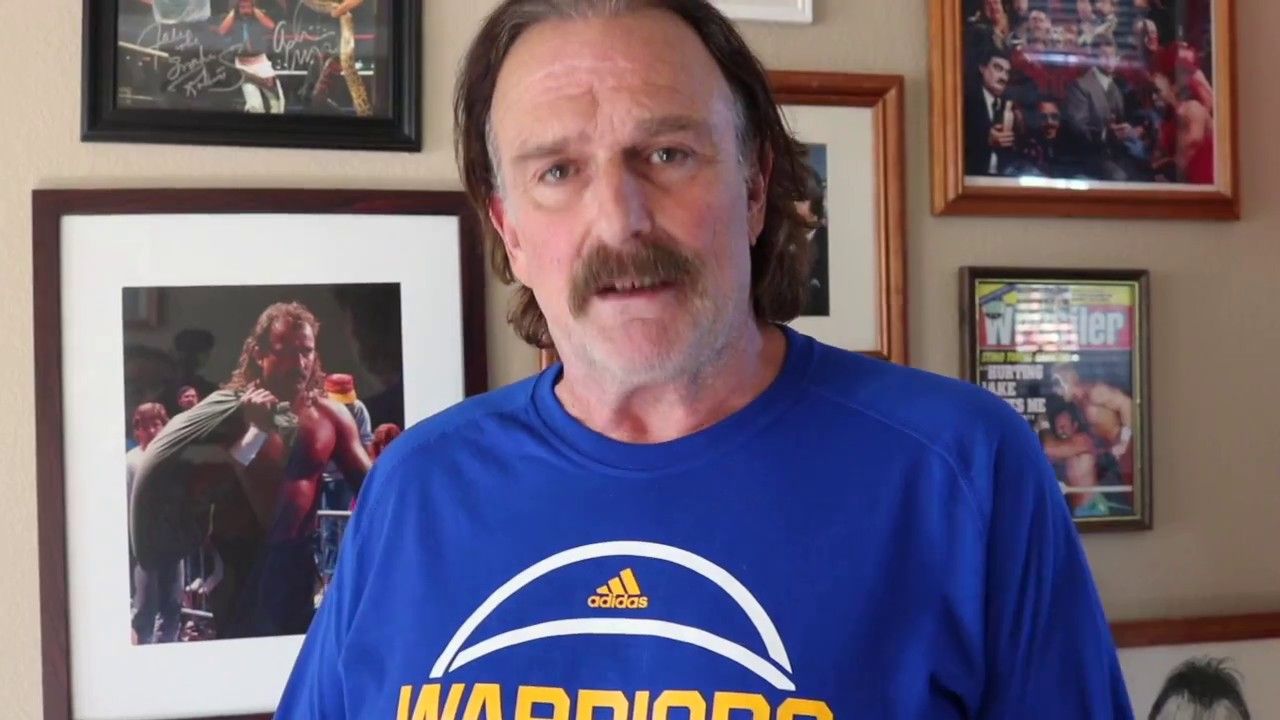Over 6 decades, World Wrestling Entertainment (WWE) has become one of the most popular and profitable entertainment industries in the world. Its famously die-hard fans have long been delighted by the in-the-ring drama and bone-crunching athletics.
One of the biggest contributors to this success is the talent. Wrestlers with larger-than-life personalities sell the storylines and ramp up the soap opera style drama. Some are heroes, some are villainous heels, some are sidekicks, but all of them try to find a gimmick that will etch them into wrestling history.
Some WWE stars go on to become stars outside of the ring.
For example, Dwayne “The Rock” Johnson is one of the biggest movie stars working today, while Dave Bautista and John Cena pop up in Hollywood tentpoles. Andre the Giant is also one of the most recognizable faces in the world as the template for the now legendary and ubiquitous OBEY street art design.
However, other WWE stars aren’t so well-known. Some of them stay in the WWE or work behind the scenes, while others move on to find steady work elsewhere, and still others fall on hard times.
For every recognizable face, there’s a handful of other former stars who have changed dramatically from their heady days in the ring. Sometimes this change is part of a carefully choreographed character choice, but for some, the ravages of time simply take their toll.
It's time to take a look back at the WWE stars who have changed in big ways, with the 10 WWE Stars Who Are Unrecognizable Today.
Jesse "the Body" Ventura Then
Born James George Janos, Jesse Ventura has had an impressive career by anyone’s standards. He was a Navy Seal who served time in Vietnam. He got his start with the American Wrestling Association (AWA) before joining the WWE (then called the World Wrestling Federation, or the WWF).
He unsuccessfully tried for the WWF world title, losing to Bob Backlund in the early '80s, but by the middle of the decade he had a run of high profile victories in the ring.
He also had a handful of tag team victories, wrestling with some of the biggest names of the era like Randy Savage and Roddy Piper.
Ventura had some of the most high-profile feuds with wrestling mainstays like Jimmy Snuka and Hulk Hogan.
While Ventura may be one of the most well-known wrestlers in history, his time with the WWF was relatively short compared to other wrestling stars.
In fact, health issues and other career opportunities took him out of the ring relatively early (he claims that exposure to Agent Orange during his service in Vietnam is to blame for blood clots in his lungs).
Despite this, he continued to work with the WWF and its iterations in different capacities. He was a commentator in the late '80s and early '90s, and many fans fell in love with his colorful, unorthodox commentary.
Jesse "the Body" Ventura Now
Ventura is arguably more famous for his career outside the ring than in it.
As his wrestling career winded down, he appeared in Predator.
A lively, spirited commentary and radio career eventually led him to get involved in politics.
He won a surprise election victory to become mayor of Brooklyn Park in the '90s, and in 1998, he was elected as the governor of Minnesota as the candidate of the Reform Party.
He served one term, deciding not to run for a second after his health problems resurfaced. Since then, he has continued to be an outspoken political voice, promoting libertarian ideals as an author and conspiracy theorist.
His controversial ideas, and a lawsuit against now-deceased American Sniper author Chris Kyle, have given him pariah status over the last few years.
In recent years, he took a job with the controversial RT America network, which has been become synonymous with the “fake news” panic. His show, The World According to Jesse, is said to offer a different take on current events and conspiracies.
As a self-professed opponent of the mainstream media, Ventura’s persona has changed from his WWF days. His image as the stereotypical California surfer bum with long blond hair and pink tights has been replaced by the older, more grizzled face of a fiercely outspoken, wispy-haired celebrity.
He’s also gotten rid of the mustache that was a defining feature of his political years.
The Undertaker then
The Undertaker is one of the most famous wrestlers in WWE history, and a lot of this is down to his look and in-the-ring persona.
While his macabre alter ego predates signing with the WWF, it was in the 1990s when the Undertaker really came to life.
Clad in his trademark Stetson hat, trench coat, boots, gloves, and suit, with an exclusively black and gray (and sometimes purple) color scheme, he took the wrestling world by storm with his infamous motto and claims that he had ties to the supernatural.
He frequently appeared in the ring with an urn of ashes that gave him powers and similarly themed managers, like the legendary Paul Bearer.
However, all of this would be moot if it didn’t translate to in-the-ring glory, and the Undertaker has that in spades. His defeat of Hulk Hogan in 1991 forever endeared him to fans and made him a WWF champion.
An earlier victory against Koko B. Ware showed off his famous Tombstone Piledriver. This trademark move and others like the Choke Slam strengthened his reputation as a consummate showman.
He is also famous for The Streak, a stretch of time in the mid-2000s when he had 21 consecutive wins in the ring.
The Undertaker Now
The wrestler born Mark William Calaway has stayed with the WWE and remains both a fan favorite and a force in the ring.
In the late '90s, the Undertaker had a dramatic storyline with the often-masked wrestler Kane. Kane was purported to be the Undertaker’s younger brother, seeking revenge for the Undertaker destroying their family.
This culminated in an Inferno match where the two wrestled surrounded by fire, with the Undertaker emerging victorious, but just barely.
They went from rivals to teammates, wresting under the moniker Brothers of Destruction. The Undertaker’s later career has been marked by breaks from wrestling.
In 2016, the physical demands of his work began to take their toll, with concussions and physical strain taking the blame. Images floated around the web of Calaway out of costume, with a receding hairline and his hair undyed and gray.
Some fans raised concerns that the wrestling mainstay needed to slow down, but he has since returned to the ring.
He performed at the Greatest Royal Rumble in Saudi Arabia, notching a decisive victory against WWE champion Rusev in a Casket Match.
The Undertaker has married former WWE diva Michelle McCool, and her social media posts show an older Undertaker who has a life outside the ring. The trenchcoat is still there, but the hat and tie are gone.
Trish Stratus then
Trish Stratus lit up the WWE during its Attitude Era in the 2000s with intense feuds and a lot of in-the-ring drama. She’s credited with shaking up a lot of the WWE and changing the way that women were portrayed in the industry.
Stratus began as a fitness model, acting as a manager in the WWE. Her career was initially defined by her feud with fellow WWE diva Lita. She fought Stephanie McMahon in the No Way Out 2001, losing the match but surprising fans and piquing their interest.
She also dated WWE honcho Vince McMahon on air, which, coupled with her loss to his daughter, led a string of humiliating episodes, including being ordered to bark like a dog by McMahon while crawling around the ring.
The payoff for the humiliation came at WrestleMania X-Seven where she effectively changed the narrative by trouncing her tormentors, becoming a fan favorite and a role model for female WWE fans in the process. Her team-up with rival Lita for the Battle of the Sexes resulted in a loss but a lot of respect and good will.
She went on to win the women’s championship seven times, beating rivals like Molly Holly and Sasha Banks and becoming one of the most, if not the most, respected female wrestlers in WWE history.
As a heel, she had notable storylines. Besides her rivalry with Lita, a feud with unstable fan-turned-enemy Mickie James delighted fans. She retired in 2006.
Trish Stratus Now
Despite some very uncomfortable moments, Stratus’ reputation as one of the best remains intact.
Aside from period reappearances in the WWE, she has resumed her pre-WWE work as a fitness model.
She popped up in TV shows and movies like Armed & Famous and Bounty Hunters before moving on to launch her own health and fitness business ventures.
She has a line of health products and an ecofriendly yoga studio in Toronto called Statusphere that has won several local business awards.
After retiring from the WWE, she married her longtime sweetheart and now has two kids. She has become a prolific charity worker, working with health and children’s wellness organizations like the Ronald McDonald House, the Heart & Stroke Foundation, and the Special Olympics.
She entered the WWE Hall of Fame and 2013, becoming the youngest inductee in the organization’s history. She was inducted by her rival Stephanie McMahon.
She’s returned to the ring in 2011 and 2016, and most recently participated in the Women’s Royal Rumble in January of 2018.
Though she admitted that she doesn’t always follow WWE these days, she is proud of her role in the Women’s Revolution that paved the way for female wrestler’s to have more active roles in the ring.
Hillbilly Jim then
During his heyday, Hillybilly Jim was a huge fan-favorite. As a protégé of Hulk Hogan, Jim’s wrestling prowess was bolstered by good business sense and an awareness of what fans wanted in a match.
Clad in overalls and a bushy beard, he was introduced to audiences as a die-hard Hulk Hogan fan who was compelled to enter the ring when his idol was in trouble.
This stunt helped him cultivate two aspects of his enduring image— one as the earnest protégé of Hogan, the other as a down-to-earth, blue collar fighter.
Always seen as a funnier or lighter character than some of the more serious wrestlers, Jim began each match with a mini hoedown, entering the ring to the tune of “Don’t Go Messin’ With a Country Boy”, dancing and making a spectacle.
His matches are the stuff of fan adoration. He became known for fighting monster-themed wrestlers like King Kong Bundy. His tuxedo matches against Mr. Fuji, so-called because they fought in tuxedoes, displayed a knack for giving audiences both humor and physicality in matches.
In the 1988 Survivor Series, he wrestled alongside Hogan and Randy Savage and was a common sight in tag team matches throughout the '80s. He was often eliminated before the win, but he provided support and humor.
He appeared on trading cards and in a Saturday morning cartoon alongside his mentors and fellow wrestlers. A neck injury during a team bout in 1986 slowed his career, and he had his last match in 1990.
Hillbilly Jim Now
Some WWE stars leave the organization bitter and resentful. Hillbilly Jim is not one of those people. Alongside stints with the WWE, he’s had a successful career in music and radio.
"I don't have my Sirius XM radio show because I'm Jim Morris. I've got it because I'm Hillbilly Jim…This company gave me Hillbilly Jim,” he told the Bleacher Report.
He stayed with the company that gave him his big break through much of the 9'0s and the first half of the 2000s. He had stints as a guest referee and as the manager of the similarly-themed Godwinn’s for a while.
He later became an ambassador for the WWE, working as a sales representative, emceeing regional events, and sometimes returning to the ring for nostalgia matches.
Leaving the company in 2005, he has hosted the Moonshine Matinee, a radio program that features southern rock on Sirius XM. He is also a member of the Kentucky Blues Society and appears at local events.
In his career, he has accrued a lifetime of anecdotes and famous friends, doing charity work for causes like Farm Aid and sports events for the disabled.
In 2018, it was announced that he would be inducted into the WWE Hall of Fame. Even though his wish of being inducted like Hulk Hogan was a no-go, Hillbilly was characteristically enthusiastic, saying that the honor was “as good as I could ever hope for.”
AJ Lee then
AJ Lee stepped out of the ring at the peak of her career. A self-described “one girl revolution” that made the WWE ask if she was “the figment of some Manga-geek’s adolescent imagination," her geeky, tomboy personal differentiated her from the other WWE divas, even as she racked up fans, wins, and championships.
She came in third in NXT season 3, debuting in Smackdown in 2011. She made waves with an appearance in WrestleMania 28, largely due to her on air relationship with fellow wrestler Daniel Bryan, purportedly costing him a victory by distracting him with a kiss.
This kickstarted a period of telegraphed instability where Lee was just as famous for her ringside romances as she was for her work in the ring.
Her on-air persona included a rocky stint as a manager before she won the Divas Championship in 2013 by manipulating her best friend and soon-to-be rival Kaitlyn.
During this time, Lee played the role of the heel, constantly sniping at her female rivals like the Bella Twins and retaining the title until she was dethroned by Paige.
This began a rivalry that would continue through events like Battleground and SummerSlam.
She recovered her title before losing to the Bella Twins in 2014 and then recapturing it, even teaming up with her onetime rival Paige to fight off her other rivals, the Bellas.
AJ Lee Now
Lee, whose real name is April Jeannette Mendez, retired from the WWE after Wrestlemania 31. Rumors circulated that her departure was due to bad blood between the WWE and her husband/fellow wrestler CM Punk.
There were also rumors of Lee’s own problems with roster and of a neck injury. Lee had also been vocal about disparities in the treatment and payment of women in the WWE.
In 2016, Lee published her autobiography Crazy Is My Superpower: How I Triumphed by Breaking Bones, Breaking Hearts, and Breaking the Rules. A TV show based on the book was in development as of 2017, with Lee acting as executive producer.
She has remained in the limelight following her departure from the WWE. In addition to publicity for her book and possible TV series, she has worked to raise awareness for mental health issues and challenges the stigma around mental illness.
She has partnered with the National Alliance on Mental Illness to raise funds through a GoFundMe campaign called “Call Me Crazy for a Cause.”
She also works with the American Society for the Prevention of Cruelty to Animals, and on her Twitter account, she describes herself as “New York Times Best Selling author, Animal Avenger, former wrestling champ, foul-mouthed gamer.”
Scott "Razor Ramon" Hall then
Scott Hall has become synonymous with the idea of the tragic wrestler, the charismatic star who struggles to keep his image in check while bouncing from the ring to rock bottom with shocking frequency.
He entered the professional circuit in the '80s, moving through different leagues under monikers like “Magnum Scott Hall” and “Big Scott Hall,” often lifting gimmicks from other wrestlers.
He ended up on Vince McMahon’s radar and impressed him with a Scarface impression, and thus the caricature of the macho, suave Razor Ramon was born.
He wrestled against Bret “the Hitman” Hart at Royal Rumble ’93 and the Kid in a match. Both were losses for Hall, but they were exciting matches that generated good press.
He won the Intercontinental title and the Battle Royal, giving him another title.
Internal politics over who was the true champion—Hall or Shawn Michaels, who had absconded with the title belt after his suspension—led to the televised bout in WrestleMania 10.
More title bouts followed, as did a feud with Golddust. During this time, Hall was part of the Kliq, with others like Shawn Michaels and the Kid. By this point, Hall’s substance use had led to some suspensions and he was clashing with the WWF.
These issues coincided with his jumping ship to the WCW. In an infamous publicity stunt with other famous wrestlers like Hulk Hogan, this move was framed as a hostile takeover of the WCW by some of the WWF’s biggest names.
Scott "Razor Ramon" Hall Now
By this time, Hall’s behavior had caught up to him. A car ran over his ankle, putting him out of commission for a time. He returned to the WWE in 2002.
A feud with Steve Austin proved to be too much, though, as Austin’s routine of dousing his competitors in beer clashed with Hall’s attempts to stay sober.
In 2002, he was released from the WWE and spent the next few years going through different circuits and reappearing in the WWE in 2014-2015.
During this period, the trends of substance abuse in the wrestling industry became more well-known.
The WWE admitted that it had spent “six figures” on Hall’s rehab treatments over the years. Hall has opened up about his struggles, including his issues to be as macho as his in-the-ring persona and his difficulties reconciling taking a man's life in self-defense.
He has also had a series of alcohol related arrests in 2008, 2010, and 2012.
Things looked dire for Hall at one point, but Diamond Dallas Page (who has made a habit of helping down-on-their-luck wrestlers clean up and get healthy) invited Hall to come live with him and recuperate.
Despite having a pacemaker and being on numerous medications, it seems like clean living and yoga have helped Hall recover.
He appeared in the WWE in 2018 and threw shade at longtime costars Lex Luger and the British Bulldog.
Chris Nowinski then
Few wrestlers have lived such different lives before and after the ring as Chris Nowinski.
As a Harvard graduate, he used his Ivy League background as the basis for his ring persona. He played the upper-class snob, acting arrogantly and treating those around him as inferior.
This made Nowinski ideal material for a heel, and he showed ambition wrestling in independent circuits until he scored a contract with the WWE.
Debuting in 2002, he won matches in WWE RAW, defeating Spike Dudley and Bradshaw. Later that year, he won the WWE Hardcore title and feuded with the Dudley Boyz and Tommy Dreamer, who attacked him in a Harvard classroom.
He defeated Dreamer and feuded with Maven as well as Al Snow, his former trainer, defeating them on multiple occasions, while also suffering defeats throughout 2002 and the beginning of 2003.
He alternated allies and rivals, repeatedly going against the Dudley Boyz. His last televised match resulted in a loss against Maven.
By mid-2003, however, Nowinski’s appearances became less frequent as he recovered from a concussion. Those problems didn’t go away, though, and he continued to experience head trauma as a result of his injury.
By 2004, Nowinski was officially off the air and retired from the ring. This would usher in the next stage of his career.
Chris Nowinski Now
Nowinski spent some time post-retirement working with the WWE. He was their political correspondent at the Democratic National Convention in 2004, and there was talk of him assuming a behind-the-scenes role in the organization.
These aspirations faded when Nowinski released his book Head Games: Football’s Concussion Crisis. Nowinski's research on chronic traumatic encephalopathy (CTE) and contact sports has caused ripples through the sports industry.
Contact sports had long been a large part of Nowinski’s life. In addition to his WWE career, he also played football for Harvard.
His new career has him playing a very different role, studying the relationship between concussions and contact sports.
In 2007, he helped to found the Sports Legacy Institute, later renamed the Concussion Legacy Foundation. Not everyone has been open to his work, and the NFL has been accused of ignoring the dangers of its industry.
Nowinski’s research also affected the WWE. Chris Benoit took the lives of his family as well as himself after displaying mentally unstable behavior. At Nowinski’s urging, authorities conducted a brain exam that suggested that concussions could have contributed to Benoit’s behavior.
These findings have led to class action lawsuit against the WWE, with over 50 wrestlers suing for damages.
Nowinski, meanwhile, has become a leading proponent of research on sports-related head injuries. His research has been recognized by major sports leagues and media outlets like CNN, ESPN, and 60 Minutes.
Ahmed Johnson then
As a wrestler and an athlete, Ahmed Johnson has made waves, but his rocky relationship with the WWE has overshadowed his achievements.
Johnson transitioned from the world of professional football to wrestling. He debuted in the WWF in 1995. Wrestling under his real name, Tony Norris, he beat Rico Suave.
He adopted his moniker Ahmed Johnson for his television debut, brawling with Yokozuna and beating him and his team (including Razor Ramon), wrestling alongside Shawn Michaels and the British Bulldog.
Season’s Beatings in 1995 notched him another victory, but a post-match cheap shot launched a feud with Jeff Jarrett, which was settled in the 1996 Royal Rumble.
Johnson won because Jarrett was disqualified for hitting Johnson with a guitar. It was a bittersweet victory that gave him a concussion.
He performed in events throughout 1995-1996 and won the Intercontinental Championship, becoming the first African-American wrestler to win the title.
This was also the time of one of his most notorious moments as rival Goldust kissed him in the ring. Johnson was visibly upset, and he later explained that Goldust went against what they had agreed to in rehearsal.
He would go on to beat Goldust again, winning the 11 man Battle Royal.
Johnson was on course to be win the WWF championship, but health problems forced him out of the ring for months. While this was presented as part of a feud with new rival Farooq, most of that storyline predated his injury.
Ahmed Johnson Now
The Faarooq feud continued. He joined the Legion of Doom to go against the Nation of Domination, losing to Faarooq. A year later, he joined the Nation and his rival to take on the Undertaker.
His return after his recovery in 1997 saw him leave the Nation, then feud with them. His last WWF stint was in 1998, once again fighting against his rivals. He joined the WCW as part of the Harlem Heat but his career stalled.
His refusal to show up for an appearance led the promoters to give fans his phone number and bombard him with abuse and prank calls. Moments like this seem to define his wrestling career: impressive victories followed by ill will and humiliating moments.
Since his retirement, Johnson’s public appearances have been sporadic.
He was in Too Legit: The MC Hammer Story but has mostly laid low, surfacing every few years to give scathing interviews about the internal culture of the WWE.
In an interview, he said that his landmark Intercontinental victory was marred by racism. One of his fellow wrestlers scratched a congratulations message onto his car along with a racial slur.
He claims that he got into a locker room brawl with the Rock after he overheard the Rock and Triple H making racist comments. He has compared Vince McMahon to the devil.
He was also part of the class action suit to sue the WWE for concealing the risks of brain damages endured in the ring.
Sasha Banks then
While a lot of the wrestlers on this list became unrecognizable after leaving the WWE, Sasha Banks is an exception.
Known for switching up her look, Banks has changed her appearance and moniker multiple times since joining the WWE, and she looks completely different than she did during her early WWE days.
As an ambitious star who is game to be hero or heel, Banks, whose real name is Mercedes Kaestner-Varnado, has wrestled under the names Miss Mercedes and Mercedes KV.
She’s also part of a famous family. Her famous cousins include sometimes-WWE star and musician Snoop Dogg, as well as singers/actors Brandy and Ray J.
She got her start with Chaotic Wrestling and moved onto the independent circuit, joining the WWE’s developmental league NXT in 2012.
Although her first televised appearance was a loss to Paige, her second resulted in a win against Alicia Fox. She was then part of a storyline in which Audrey Marie played a deranged fan jealous of Banks.
A series of championship defeats saw Banks turn into a villain and join the Beautiful, Fierce Females (BFFs). This marked her transition from a shy, timid competitor to “The Boss,” a gimmick which has seen her transform into a formidable force in the ring.
Sasha Banks Now
The BFFs disbanded in 2014, and Banks went on to become a champion. After a series of losses to Charlotte, she won the NXT TakeOver: Rival against her longtime foe, retaining the title and gaining Charlotte’s respect in the process.
She lost the title to Bayley a month later, but the match was a highlight of the year.
She joined Raw in 2015 as part of Team B.A.D., facing rivals like Charlotte and Paige and beginning a winning streak.
By 2016 she had split with Team B.A.D., was attacked by her former teammates, and cemented her status as a fan favorite even as she lost the WWE Women’s Championship.
Banks won that championship the month after her loss. A month after that, she lost the championship to Charlotte at SummerSlam.
She participated in the Survivor Series, Roadblock: End of the Line, Royal Rumble, and Raw Women’s Championship, winning the latter and ending a feud with Nia Jax by defeating her.
Throughout 2017, she attained and lost the Raw Women’s Championship, though she has held the title an impressive four times.
She is currently engaged in a storyline with Bayley, with much of her 2018 matches ending in losses. Some have suggested that the avid entertainer and always game performer has cooled a bit on the WWE.
In an interview, she expressed disappointment with her yo-yo status in the WWE and sometimes pines for the simpler days of the NXT.
Jake "the Snake" Roberts then
As one of the most famous wrestlers in the industry’s history, Jake “the Snake” Roberts’ career hits all the beats-- memorable theme persona, iconic feuds, tragic lows, and a late-career resurgence.
If the trajectory is predictable, it’s because he was one of the first, and certainly one of the most popular, to mark the path.
What a lot of people don’t know is that Roberts comes from wrestling stock. Both his father and half-brothers were wrestlers, so his ascent to the WWF after a few years in the National Wrestling Alliance was all but assured.
He was known for incapacitating his audiences and then letting Damien, his snake, crawl over them.
It was a gimmick that he would bring to the ring even after his prime days were over.
His first big feud was with Ricky “the Dragon” Steamboat, and in his debut year with the WWF, he had high profile matches with Randy Savage and Hulk Hogan.
Famous feuds with Honky Tonk Man and Rick Rude followed. Roberts went on to have feuds with Andre the Giant, Ted DiBiase, and the Earthquake.
He turned heel and became a rival Randy Savage, crashing Savage’s wedding with a cobra as a wedding gift.
His last major storyline was a feud against former ally the Undertaker. Robert’s last match in the WWF was a loss to the man who helped him spoil Savage’s wedding.
Jake "the Snake" Roberts Now
By the early '90s, Roberts had jumped to the WCW and appeared in different circuits before returning to the WWF as a born-again Christian in 1996, fighting alongside former rival the Undertaker and against some of the biggest names of the time like Steve Austin.
By 1997, he was back touring the circuits and wrestling in Europe, but by then the wrestler’s life was taking his toll.
He came into hot water for animal neglect and was convicted of animal cruelty in the UK for starving his in-the-ring costar.
Returning to the USA in 2005, he once again appeared in the WWE, tormenting opponents like Ric Flair and Triple H with a new snake.
Outside of the ring, he underwent hip surgery and had run-ins with the police over substance and alcohol related offences, eventually going into rehab, which was funded by the WWE.
Post-rehab, he attempted a comeback, but he relapsed in Cleveland, Ohio and the match had to be stopped due to a drunken collapse. He’s continued in the ring and was inducted into the WWE Hall of Fame in 2014.
He participated in the 1999 wrestling documentary Beyond the Mat, but in 2016, he was the subject of his own documentary called The Resurrection of Jake the Snake.
The documentary, which chronicled his struggle with addiction, marked a sort of turning point, and Roberts claims that he’s put his turbulent past behind him.
In addition to the occasional WWE cameos, he has performed in a one-man comedy show.
---
Are you surprised about what any of these WWE stars having been doing in recent years? Let us know in the comments!

